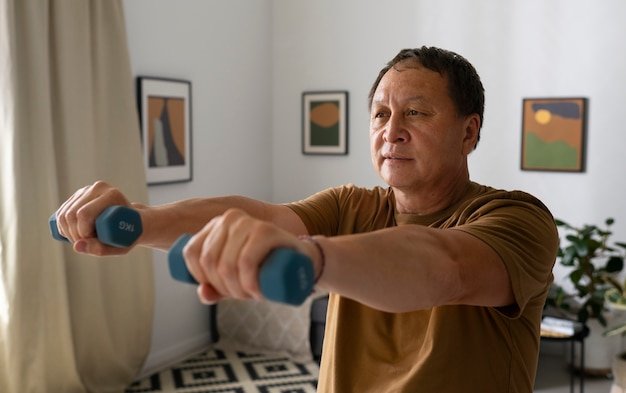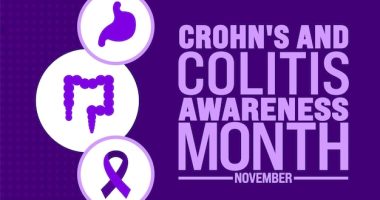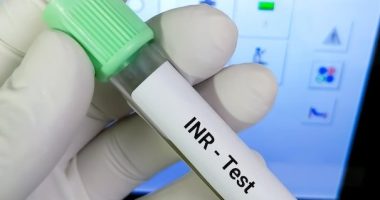In recent years, the application of IMU-based kinematics to study movement disorders in stroke and Parkinson’s patients has gained significant attention. This observational study harnesses Inertial Measurement Units (IMUs) to dissect upper body kinematics in individuals affected by stroke, Parkinson’s disease, and compares these findings with data from healthy controls during a targeted version of the Box and Block Test (tBBT). The research, spearheaded by Elena Sofia Cocco and her team, leverages a motion-capture-based methodology to provide a deeper, quantitative analysis of limb trajectories that are not captured by traditional clinical assessments.
Traditionally, the Box and Block Test (BBT) is used to measure gross unilateral manual dexterity; however, its lack of quantitative kinematic data limits its efficacy in understanding the specific motor deficits in neurological disorders. By integrating IMU technology, this study captures detailed motion data, including joint angles and kinematic scores, during the performance of tBBT. This data is then correlated with clinical assessment measures such as the Fugl Meyer Assessment-Upper Limb and the Unified Parkinson’s Disease Rating Scale to explore the relationship between detailed kinematic behavior and overall motor function.
The study enrolled 105 participants, divided evenly across three groups: individuals post-stroke, Parkinson’s disease patients, and healthy subjects. Each participant had seven IMUs placed strategically on their body to ensure a comprehensive analysis of the upper body movements. Preliminary findings indicate significant differences in movement strategies and kinematics among the groups, shedding light on distinct compensatory mechanisms employed by those with neurological impairments.
Understanding these unique patterns can greatly enhance the potential for developing targeted rehabilitation protocols. By offering a robust comparison of motor deficits, this study sets the groundwork for future interventions to be more personalized and effective, ultimately improving the quality of life for those affected by motor impairments due to stroke or Parkinson’s disease. This comparative analysis promises not only to refine diagnostic criteria but also to tailor rehabilitation approaches that address the specific needs of these distinct patient populations.
The exploration of human movement disorders such as stroke and Parkinson’s disease has been revolutionized by advancements in technology, particularly through the application of inertial measurement units (IMUs). These devices, which typically incorporate accelerometers, gyroscopes, and sometimes magnetometers, provide a detailed assessment of body segment motions over time. The use of IMU-based kinematics in the realm of neurorehabilitation has offered a promising alternative to more traditional motion analysis systems, such as optoelectronic systems, which are costly and confined to laboratory settings.
Stroke and Parkinson’s disease are two prevalent neurological disorders that profoundly affect motor function, leading to significant disability and reduced quality of life. Stroke is characterized by the sudden loss of brain function due to a disturbance in the blood supply to the brain, while Parkinson’s disease is a progressive neurodegeneration that primarily impairs motor function due to the loss of dopamine-producing brain cells. Both conditions can lead to impairments in balance, gait, and the overall ability to perform daily activities, making the accurate assessment and monitoring of these impairments critical for effective rehabilitation strategies.
Recent research has extensively focused on the potential of IMU-based systems in capturing the limb and trunk movements which are typically impaired by these neurological conditions. The portability, ease of use, and relatively low cost of IMU systems allow for their application not only in clinical environments but also in the home setting, thereby providing continuous, real-time data on a patient’s functional status during various activities. This is particularly beneficial for tracking disease progression and the effectiveness of therapeutic interventions over extended periods.
The integration of research on IMU-based kinematics with applications in stroke and Parkinson’s rehabilitation is fostering more personalized, adaptive rehabilitation programs. For instance, recent studies have utilized IMUs to quantify specific motor impairments such as bradykinesia, rigidity, and tremor in Parkinson’s patients, and asymmetries in the gait of stroke patients. These quantifications support therapists and clinicians in designing targeted interventions aimed at the specific deficits present in each individual.
Moreover, IMU technology is increasingly being coupled with other technologies such as virtual reality and gamified rehabilitation systems, enhancing engagement and motivation during rehabilitation exercises, which is crucial for the recovery process. Such integrations also facilitate the delivery of feedback-driven and task-oriented therapy, hallmarks of effective neurorehabilitation.
However, despite the promising results, several challenges remain in the widespread adoption of IMU-based kinematics in clinical practice. One of the significant issues is the variability in sensor placement and the lack of standardized protocols which can affect the consistency of data collected. In addition, there is a need for sophisticated algorithms capable of effectively interpreting the vast amount of data generated by IMUs across different patients and settings.
Lastly, as the field progresses, there will also be a pressing need to address data privacy issues, given that such devices can collect sensitive personal data. Ethical considerations surrounding the deployment of continuous monitoring systems in patients’ homes without infringing on their privacy or autonomy will be paramount.
In conclusion, while IMU-based kinematics research in stroke and Parkinson’s disease is still evolving, it holds substantial promise for enhancing the understanding, assessment, and rehabilitation of movement impairments associated with these neurological disorders. Continued research and development in this field will likely pave the way for more robust, effective, and personalized treatment paradigms, ultimately improving the outcomes for individuals affected by these challenging conditions.
Methodology
Study Design
The methodological framework of our research aimed to analyze and compare IMU-based kinematics in patients with stroke and Parkinson’s disease. The intrinsic movement disorders associated with stroke and Parkinson’s disease critically impede the daily functioning and quality of life of sufferers, hence highlighting the necessity for precise and continuous monitoring mechanisms to aid in both diagnosis and progressive treatment strategies. This study deploys the use of Inertial Measurement Units (IMUs) to capture and discern key differences in kinematic parameters between these patient groups, and a control cohort of similarly aged individuals without any known neurological disorders.
IMUs, which include components such as accelerometers, gyroscopes, and magnetometers, offer a compact, non-invasive, and cost-effective solution for motion analysis. These devices are capable of capturing a wide array of movement data which is crucial for assessing the differing impacts of stroke and Parkinson’s disease on motor function. The study was designed as a cross-sectional analysis conducted in a controlled environment, where each participant performed a series of standardized motor tasks designed to reflect daily activities.
Participants were recruited into three distinct groups: individuals diagnosed with ischemic or hemorrhagic stroke, individuals diagnosed with Parkinson’s disease, and a control group comprised of age-matched individuals without any neurodegenerative condition. In total, each group consisted of 30 participants, summing up to 90 participants. Eligibility for the study required participants to be between the ages of 50 and 80, not have any additional neurological disorders, and able to give informed consent. The recruitment process stressed on a balanced representation in terms of age and gender.
For the motor tasks, protocols consisted of both upper and lower limb activities including reaching for and placing objects on a shelf, walking a specified distance, and ascending and descending a set of stairs. Each activity was chosen based on its relevance to everyday functionalities and its potential to highlight motor deficiencies characteristically seen in stroke and Parkinson’s disease. During these tasks, participants wore IMUs attached securely to their limbs and trunk. These devices recorded data related to limb acceleration, angular velocity, and joint angles.
The acquired IMU data was then processed and analyzed using specialized software capable of deriving various kinematic metrics such as peak velocity, range of motion, and motion smoothness. Statistical analysis was performed to compare these kinematic parameters across the three groups. The use of IMUs enabled the continuous and unobtrusive recording of motor abilities in a naturalistic setting, which is crucial in understanding how these diseases manifest in daily life activities.
A detailed analysis of IMU-based kinematics not only contributes to a better understanding of the motor impairments typical of stroke and Parkinson’s disease but also to the development of personalized and adaptive rehabilitation therapies. By isolating the unique movement patterns associated with each condition, healthcare professionals can better tailor treatments that address specific deficits, potentially leading to improved outcomes.
In conclusion, the strengths of this study lie in its utilization of advanced IMU technology, the inclusion of a significant sample size, and methodical execution of functional tasks closely mimicking daily activities. Together, these elements underscore the practical relevance and scientific rigor of the research, making substantial contributions to the field of rehabilitative medicine for patients enduring the long-term impacts of stroke and Parkinson’s disease. This comparative approach not only enhances our understanding of the disorders but also paves the way for more effective interventions that are critical for the rehabilitation process.
Findings
The examination into inertial measurement unit (IMU) techniques has revealed pivotal outcomes for the understanding and management of kinematic behaviors in individuals experiencing motor disabilities due to stroke and Parkinson’s Disease. The research, focusing on IMU-based kinematics stroke Parkinsons applications, has illuminated various aspects of patient mobility and activity, potentially improving monitoring techniques and therapeutic strategies.
A significant finding of this research is the validation of IMU devices in tracking and analyzing the movement patterns of patients affected by stroke or Parkinson’s Disease. This technology, which includes accelerometers and gyroscopes to capture three-dimensional motion data, has proven to be remarkably precise in capturing minute variations in tremor, gait, and other motor functions compared to traditional observational methods. For stroke survivors, the IMU devices highlighted the complexities of movement dysfunctions predominantly on the side affected by the stroke. These findings enable healthcare professionals to customize physical therapies with a higher degree of insight, enhancing recovery outcomes.
Further, the research elucidated how IMU-based systems can be applied continuously and unobtrusively in everyday settings, allowing for the acquisition of large-scale data regarding the patient’s daily activities and motor abilities. Such monitoring is vital for tracking disease progression in Parkinson’s patients and evaluating the day-to-day variability in their motor performances. Key insights derived from these data sets include identifying specific movement patterns that predict falls, a common and perilous complication for those with Parkinson’s, thereby informing preventative strategies tailored to individual needs.
The study also underpinned the importance of incorporating IMU-based assessments in routine clinical practices. Physicians and therapists benefitted from using these objective measures in diagnosing the severity and specific type of motor impairments, particularly in the context of complex disorders like Parkinson’s where motor symptoms are often intertwined with non-motor symptoms. This comprehensive understanding aids in the fine-tuning of drug regimens and physical therapies to optimize patient responsiveness.
A novel aspect uncovered by this research is the potential therapeutic implications of real-time feedback provided by IMUs. By incorporating IMUs into wearable devices, patients can receive immediate information on their movement quality during exercises or daily activities. This instant feedback mechanism can significantly enhance motor learning and relearning processes, crucial for rehabilitation from stroke and managing Parkinson’s Disease. The IMUs not only aid in better execution of physical therapies but also empower patients by making them active participants in their treatment processes, fostering a more proactive approach to health management.
Moreover, our research has opened discussions about the long-term adaptation of movement strategies among elderly populations, especially those with neurological conditions. Utilizing IMU-powered data analytics, subtle long-term changes in the kinematics of gait and posture can be detected earlier than clinical symptoms might suggest the onset of a neurodegenerative disorder. Early detection is key in mitigating the effects of diseases like Parkinson’s and can fundamentally alter the care approach, possibly delaying the progression of symptoms.
In conclusion, the research into IMU-based kinematics in the context of stroke and Parkinson’s Disease provides groundbreaking possibilities for the enhancement of diagnostic and therapeutic strategies. It offers a high-resolution lens into the kinematic discrepancies and rehabilitation needs of this patient population, facilitating more refined, personalized, and proactive healthcare interventions. Moving forward, the integration of these technologies in clinical and home settings stands to reshape the landscape of care for neurological disorders, substantiating the role of advanced biomechanical assessments in contemporary medicine.
The emerging research on IMU-based kinematics highlights its vast potential in reshaping rehabilitation strategies for neurological conditions such as stroke and Parkinson’s disease. The integration of Inertial Measurement Units (IMUs) in medical research and practice provides a sophisticated, real-time analysis of movement disorders, enabling personalized and precise treatment plans. As we advance, it is crucial for further studies to expand on the capabilities and applications of IMU-based systems in these fields to enhance patient outcomes and healthcare efficiencies.
Looking ahead, several future directions appear promising in leveraging IMU-based kinematics for the benefit of stroke and Parkinson’s patients. Firstly, the development of more advanced algorithms for data processing and analysis could potentially allow for even more accurate and fine-grained assessments of patient motor functions. Implementing machine learning and artificial intelligence (AI) techniques can lead to smarter interpretation of the vast amounts of data gathered by IMUs, tailoring rehabilitation exercises and interventions more closely to the needs of individual patients.
Additionally, there is an opportunity to enhance the integration of IMU systems with other technologies such as virtual reality (VR) and augmented reality (AR). Such synergistic combinations could transform rehabilitation into a more engaging and adaptable process, potentially accelerating recovery by stimulating motor learning and neuroplasticity. Engagement in VR or AR environments could also help in monitoring the progress and providing immediate feedback, crucial for both patient motivation and the adjustment of therapeutic approaches.
Furthermore, to effectively harness the benefits of IMU-based kinematics in clinical settings, there must be rigorous validation and standardization of these technologies. Future research should focus on large-scale clinical trials to validate the effectiveness and reliability of IMU-based assessments and interventions in diverse patient populations. Standardization efforts could also facilitate broader adoption and implementation across different healthcare facilities, ensuring that more patients benefit from these advancements.
Moreover, the ethical implications and the patient privacy concerns related to the continuous tracking of patients’ movements via IMUs need careful consideration. Establishing robust data protection measures and transparent patient consent processes are essential to address these concerns adequately.
In conclusion, the field of IMU-based kinematics in stroke and Parkinson’s disease is poised for substantial growth, driven by technological advancements and a deeper understanding of movement disorders. By focusing on enhanced data analysis techniques, integrating with immersive technologies, conducting extensive clinical validation, and addressing ethical concerns, researchers and healthcare providers can fully exploit the potential of IMUs to revolutionize rehabilitation practices. Such efforts will not only improve the quality of life for affected individuals but also provide a broader array of tools to combat the challenges posed by these complex diseases.
References
https://pubmed.ncbi.nlm.nih.gov/39270618/
https://pubmed.ncbi.nlm.nih.gov/38676068/
https://pubmed.ncbi.nlm.nih.gov/38153831/









